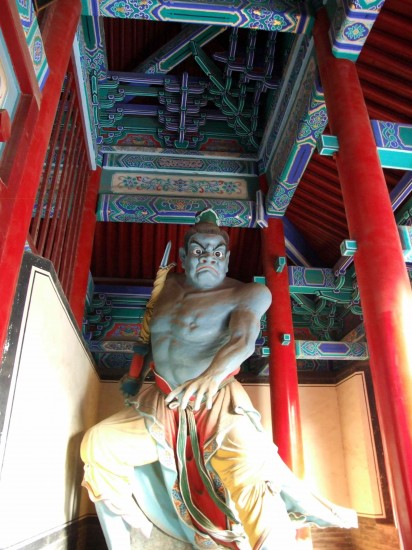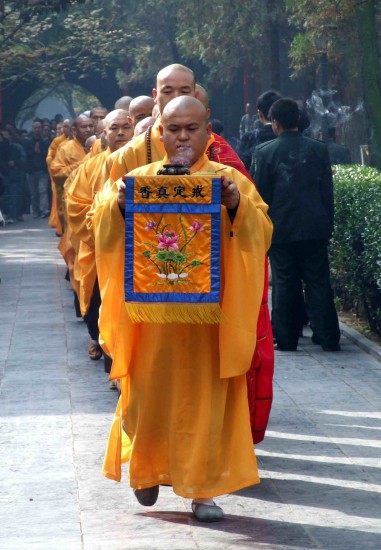This is the first of Vincent Ross’ three-part series in which he reveals a little-known aspect of China — its amazing Buddhist temples, grottoes, shines and other cultural touchstones.
China’s religious past is proving just as important as its future.
Both as tourist attractions and cultural touchstones, the temples, grottoes and shrines of one religion above all others – Buddhism – attracts tens of millions of Chinese tourists annually.
But while the nation’s hidden treasures attract millions of Chinese tourists, far fewer international travellers venture beyond the nation’s big-ticket attractions to discover the treasure that lies within.
In China, despite its suppression by the communist government from the 1950s to the 1980s, Buddhism has existed, and since the death of Chairman Mao Tse Tung in 1976, has flourished within changing social and political climates.
Accurate surveys of the number of Buddhists in China today are difficult because the faith does not require congregational membership. Estimates place the number at anywhere between 660 million and 1 billion people.
The depth of these religious roots is breathtakingly obvious on a road trip through Henan and Shanxi provinces, visiting cultural sites which modern Chinese still hold sacred.
On the expressways, which cut their way through countless kilometres of cornfields, farmland and coalfields, China’s growth is epitomised by a procession of power lines and fast-moving freight trucks, earth-moving and construction equipment, making their way to regional cities, all with sproutings of high-rise buildings under construction.
But inside the walls of some of the provinces’ revered Buddhist shrines, it seems as if time has stood still.
White Horse Temple
This is the latest incarnation of the first Buddhist temple in China, built in 68AD and rebuilt four times between the 1950s and 1970s. Twelve kilometres from Luoyang in Henan Province , Emperor Ming ordered the temple built during the Han Dynasty after he dreamt of a golden man 16 Chinese feet tall, with the aureole of the sun and moon radiating from his head. Court emissaries he sent in search of Buddhist scriptures met Indian monks in Afghanistan and returned bearing them on the backs of two white horses. 
People throng to pray on the first and 15th day of every lunar calendar month, marked morning and afternoon by processions of shaven-headed, orange-robed monks that weave their way through the temple grounds to halt before the image of Buddha and descend into chanting and devotional prayer.
It’s the best time for photographs, as clouds of fragrant smoke from giant incense sticks thrust into ceremonial fires waft around the intent faces of men and women, young and old, as they pay their respects to the master.
Old men and women quietly rest in a gazebo set amidst a sea of peone blossoms, while mistreated and abused women who have come from distant provinces file past Guanying, the Lady Buddha — recognised as the kindest Buddha in China.
Shaolin Temple
The Shaolin Monastery and Temple complex, 80km south-west of Zhengzhou, was founded in the 5th Century by an Indian monk and became firmly established a few decades later by the arrival of another Indian monk called Bodhidharma, or Damo, in Chinese.
The monastery was the birthplace of Chinese martial arts and is a focal point for Zen Buddhism, with up to 68,000 students training there annually.
A showpiece for tourists, both domestic and international, is the Shaolin Grand Ceremony cultural performance, which utilises the monastery trainees in a panoramic theatre spectacle set in a rock amphitheatre on the side of a mountain and involving 700 performers.
It is a kung fu Disneyland, but impressive all the same.
The extensive production of Zen music in five parts — water, wood, stone, wind and light — features computer synchronised lighting, dramatically lit palaces, bridges and landscapes, an orchestra, hundreds of singers and performers, and martial arts combatants wearing suits of light that fly through the air suspended from cables hundreds of metres above the ground.
Tomorrow at 9pm PST we will launch Part 2 of Vincent’s Ross’ “The Buddhist Treasures of China” with more stories and stunning photos of these little known wonders.
Photo Credits
All photos © 2008 Vincent Ross
White Horse Temple – Luoyang – Henan Province – China (c) Vincent Ross
White Horse Temple – Luoyang – Henan Province – China 2008 (c) Vincent Ross.jpg
Shaolin Temple – Grand Ceremony – Henan Province – China (c) Vincent Ross
White Horse Temple – Luoyang – Henan Province – China (c) Vincent Ross






[…] week, we have presented Part I and Part II of Vincent Ross’s stories and photos from his exploration of the Buddhist wonders […]